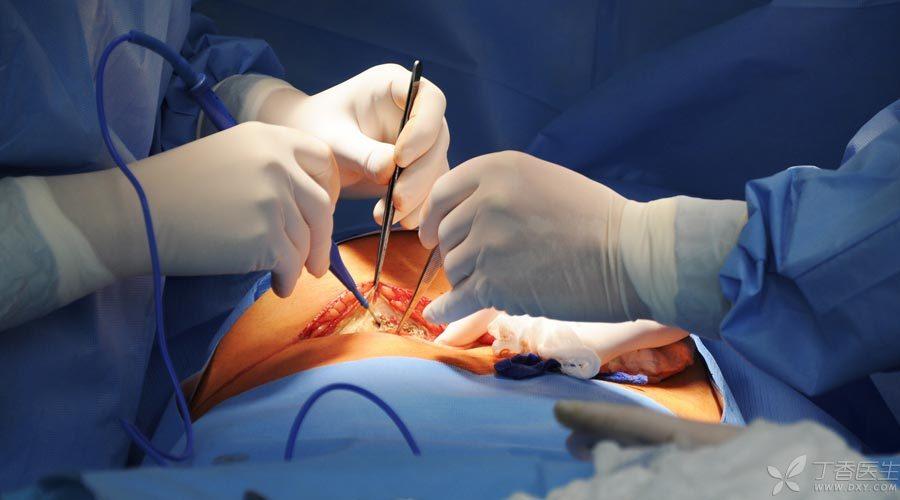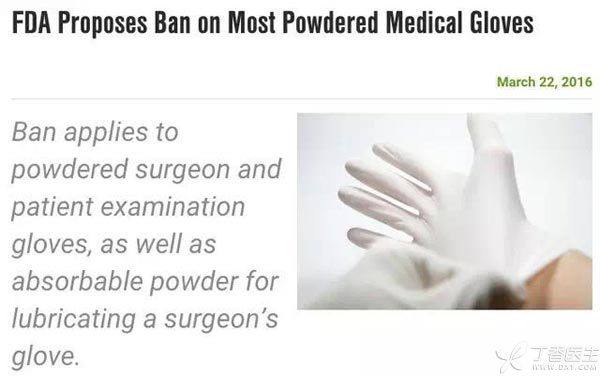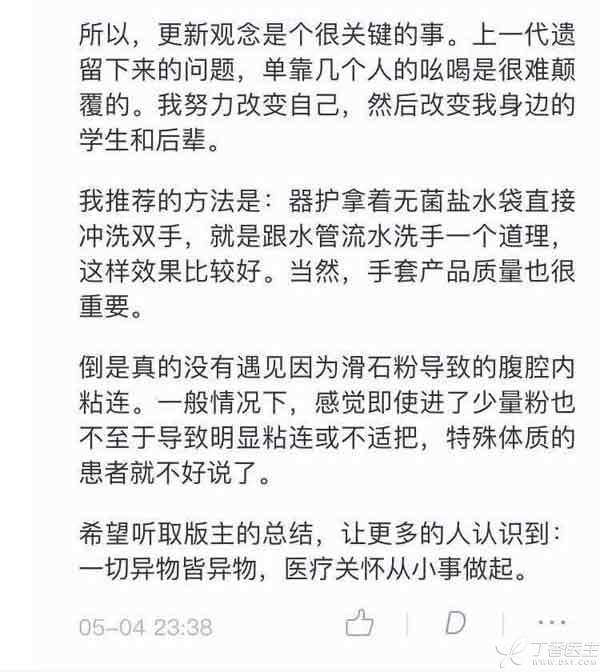
Every medical intern starts his career in the operating room with a pair of surgical gloves.
When we entered the operating room at the beginning, we opened the glove package with trepidation and clumsily wore surgical gloves. When our hands were sweating nervously, we could not reach into the gloves. We must be wondering in our hearts how the gloves were wiped with so little powder.
This memory will never be forgotten by every surgeon. Now, this kind of glove will also become history-on March 21 this year, the FDA broke a big news.
The FDA issued a ban on most powdered medical gloves, including all surgical gloves and surgical examination gloves. This seemingly simple ban may bring about an earthquake in the tens of billions of surgical glove market.
Past lives of surgical gloves
In 1889, William Halsted of Johns Hopkins Hospital in the United States designed and invented surgical gloves.
At that time, the earliest surgery was not to avoid infection, but was designed by a surgeon (later Hopkins’ dean William Halsted) for his beloved operating room head nurse Caroline Hampton.
Because he was allergic to mercury chloride, the surgical disinfectant used at that time, Head nurse Caroline Hampton was unable to continue to help Dr. Halsted clinically and decided to resign. William Halsted, who did not want to lose the capable head nurse, personally found Goodyear, the then rubber giant, and designed close-fitting surgical gloves from hand to wrist. This invention not only retained the head nurse, but also won her heart.

The above picture shows William Halsted and Caroline Hampton, the male and female protagonists in this surgical biography. At that time, the means that may have been used to pursue and protect the younger sister at that time made a marriage and changed the whole history of surgery.
Since then, surgical gloves have gradually become the standard configuration in the operating room. Surgical cap (headscarf) + hand washing clothes + surgical gloves are the three-piece set for each surgeon.
In order to make it easier to wear rubber gloves, glove manufacturers will coat rubber gloves with various powders. Over the past 100 years, despite the rapid development of other technologies in the surgical field, surgical gloves have basically maintained the basic appearance of their inventions and have not changed much.
However, all this will change with the FDA’s red card.
FDA Shines Red Card
The FDA’s move this time is also a big move after decades of controversy.

The American Gastrointestinal Association reported on the FDA’s article.
Why does FDA have to fight so hard?
Talcum powder:
Powder for surgical gloves was originally stone pine nuts and talcum powder or a mixture of the two. However, in the 1940s, granuloma cases caused by talcum powder appeared one after another. Surgeons in Europe and the United States realized the danger of powdered surgical gloves and gradually reduced the use of talcum powder-containing surgical gloves.
Corn starch:
In 1947, a report was published that corn flour treated with epichloroethanol was better than talc as glove lubricant. This absorbable powder mixed with 2% magnesium oxide as desiccant has been used in the United States to this day.
The starch-coated synthetic gloves do not have the risk of allergic reactions, but they are associated with a wide range of potentially serious adverse events, including severe respiratory tract inflammation, wound inflammation and postoperative adhesion, which is some fibrous scar tissue formed between internal organs and tissues. These side effects are attributed to glove powder used in various gloves.
Risks and Prohibitions:
Long-term clinical trials have shown that, through retrospective studies and secondary surgery, powdered surgery will increase the risk of adverse reactions. Although the above risk can be significantly reduced by repeated rinsing after wearing gloves, it cannot remove all starch residues.
This kind of glove has been banned in Britain and Northern Europe, and pink gloves now account for 50% in Europe and the United States. The instructions for all surgical gloves have also indicated their risks, but due to cost and supply reasons, pink gloves still account for a large part of the overall market.
This time, the FDA finally took a cruel step. Although this move could reach a reshuffle of the entire surgical glove market of 10 billion US dollars, the FDA still took out a red card in order to reduce the potential risks of patients.
We will wait and see what kind of behavior this move will cause.
China’s Understanding and Current Situation
As early as 1991, Zhao Yupei (now president of Peking Union Medical College Hospital), who was still an attending doctor at that time, published an article on the hazards of surgical glove powder.

As early as 30 years ago, President Zhao Yupei had already reviewed the hazards of powdered gloves, from the mixture of talcum powder and stone pine nuts, to the powder made of sodium hydrogen sulfate and starch sprinkled, to corn flour treated with chloroethanol, to powdered gloves with magnesium oxide as desiccant… All of which caused hazards.
However, due to cost considerations, many hospitals purchase gloves not only with surgical or examination gloves containing talcum powder (such gloves were banned in the 1940s); On the other hand, in order to reduce costs, many surgical gloves are torn to pieces, which not only increases the infection risk of patients, but also brings surgical risks to surgeons.
More than 30 years have passed, and President Zhao is already the president of China’s top Concorde Hospital and an academician of the Chinese Academy of Sciences. His surgery has saved the lives of thousands of patients. However, how many people may still have pink and light surgical gloves on their hands and desks every day.
We do not lack international first-class surgeons and professors, nor do we lack top equipment. What we lack is something that can change every patient and every doctor.
After all, it is what. I believe everyone has an answer.
This is the best time and the worst time.
However, what kind of gloves can be worn during the operation, is it the surgeon who can do the master? Let’s take a look, surgeons, from their own, can do what for patients?

The above picture shows the comments of netizens on the Clove Garden Forum, which is very worth learning and thinking about. The conclusion we use to make an issue of is shared with you:
Renewing ideas is a key thing. It is difficult to subvert the problems left over from the previous generation by the shouting of a few people alone. I try my best to change myself, and then change the students and successors around me.
The method I recommend (to reduce the influence of glove powder on patients) is: the protector holds a sterile saline bag to wash his hands directly, which is the same as washing hands with running water pipes, so the effect is better. Of course, the quality of glove products is also very important.
It is true that I did not meet intraabdominal adhesion caused by talcum powder. In general, I feel that even if a small amount of powder is added, it will not lead to obvious adhesion or discomfort, but I should pay attention to patients with special constitution.
I hope I can listen to the moderator’s summary and let more people realize that all foreign bodies are foreign bodies, and medical care starts from trivial matters.
